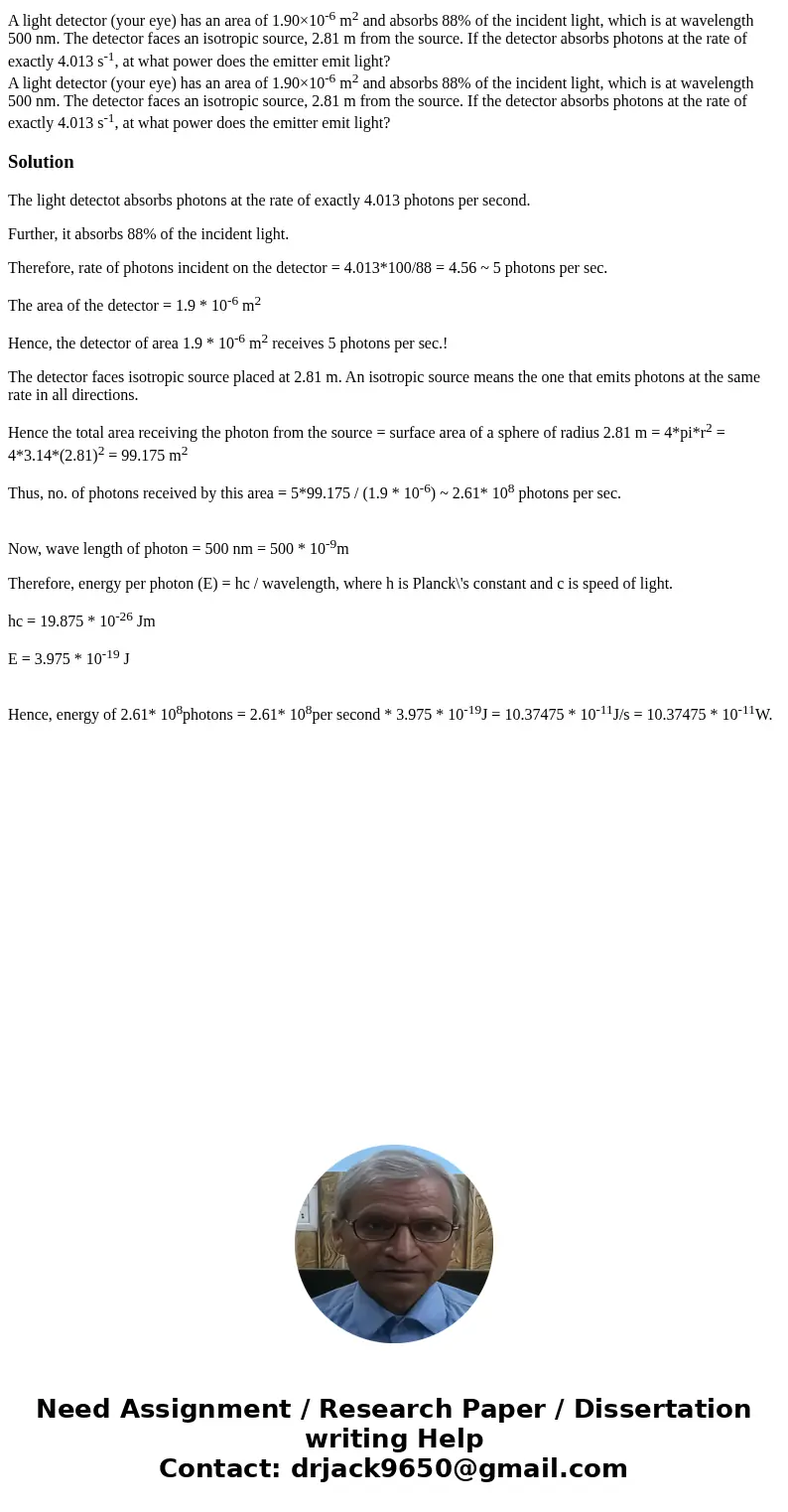A light detector your eye has an area of 190106 m2 and absor
Solution
The light detectot absorbs photons at the rate of exactly 4.013 photons per second.
Further, it absorbs 88% of the incident light.
Therefore, rate of photons incident on the detector = 4.013*100/88 = 4.56 ~ 5 photons per sec.
The area of the detector = 1.9 * 10-6 m2
Hence, the detector of area 1.9 * 10-6 m2 receives 5 photons per sec.!
The detector faces isotropic source placed at 2.81 m. An isotropic source means the one that emits photons at the same rate in all directions.
Hence the total area receiving the photon from the source = surface area of a sphere of radius 2.81 m = 4*pi*r2 = 4*3.14*(2.81)2 = 99.175 m2
Thus, no. of photons received by this area = 5*99.175 / (1.9 * 10-6) ~ 2.61* 108 photons per sec.
Now, wave length of photon = 500 nm = 500 * 10-9m
Therefore, energy per photon (E) = hc / wavelength, where h is Planck\'s constant and c is speed of light.
hc = 19.875 * 10-26 Jm
E = 3.975 * 10-19 J
Hence, energy of 2.61* 108photons = 2.61* 108per second * 3.975 * 10-19J = 10.37475 * 10-11J/s = 10.37475 * 10-11W.

 Homework Sourse
Homework Sourse